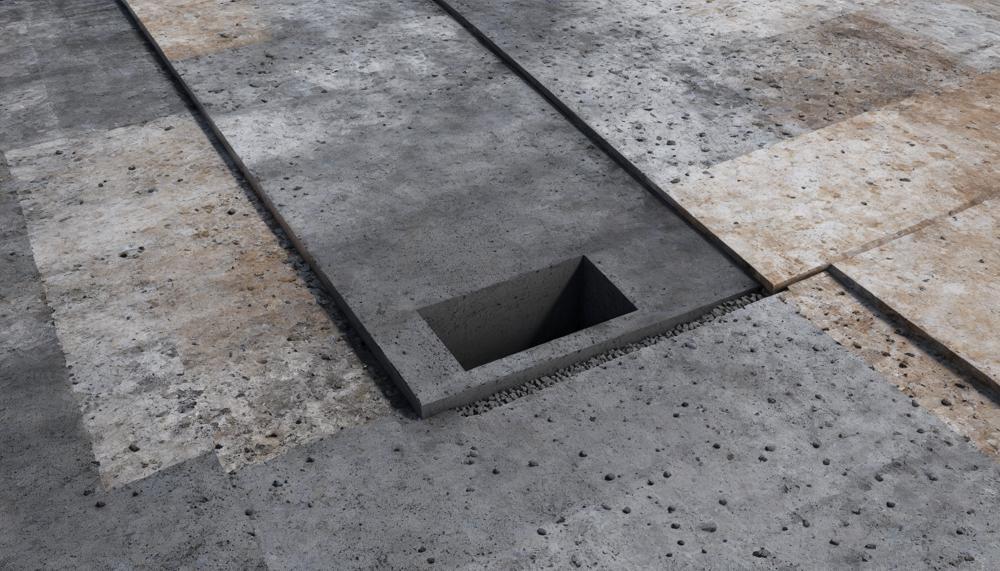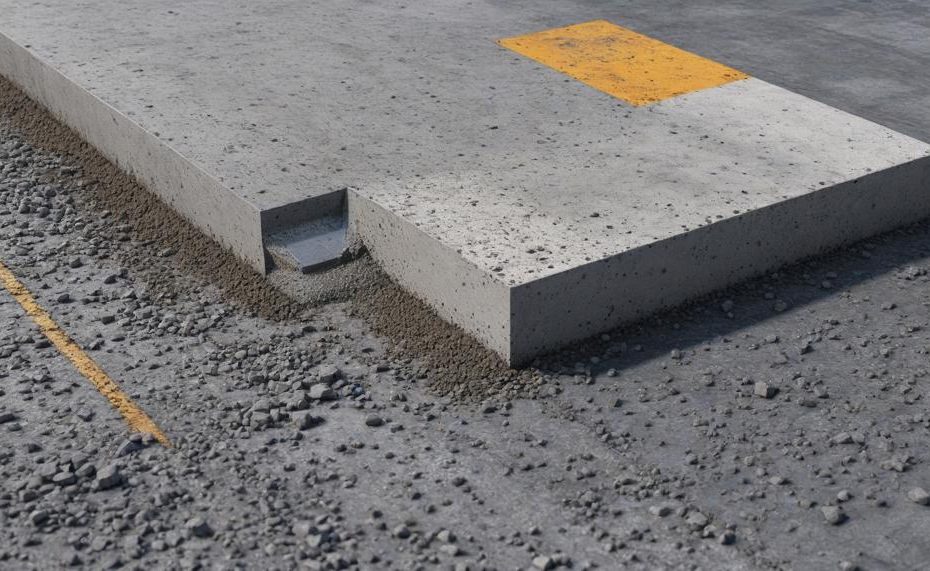When dealing with concrete, timing is everything, especially when determining how long it should cure before putting weight on it. The curing process is crucial for concrete to achieve its full strength and durability. Here’s a quick breakdown to keep your project on track:
- 24-48 hours: Safe to walk on.
- 7 days: Supports machinery and equipment.
- 28 days: Near full strength.
During the first two weeks, concrete gains about 90% of its total compressive strength, so patience is key. The optimal temperature for curing is between 60-75 degrees Fahrenheit, with humidity levels playing a vital role as well. Keeping humidity below 95% in the first week and gradually reducing it ensures proper curing.
Key Takeaways:
- Initial Walkability: 24-48 hours.
- Heavy Loads: After 7 days.
- Full Strength: Reached at 28 days, with potential for further strengthening over one to two years.
- Temperature and Humidity: Essential factors for optimal curing.
By following these guidelines, you ensure your concrete project stands the test of time, avoiding premature cracks and ensuring structural integrity.
Contents
- 1 The Basic Concrete Curing Time Chart for Beginners
- 2 What Is the Ideal Temperature for Concrete Curing?
- 3 How Does Temperature Impact Concrete Curing Time?
- 4 What Is the Ideal Humidity Range for Concrete Curing?
- 5 How Does Concrete Type Impact Concrete Curing Time?
- 6 How Does Slab Thickness Impact Concrete Curing Time?
- 7 How Strong Does Concrete Get As It Cures?
- 8 The Time Concrete Takes to Cure Can Vary Substantially
- 9 Conclusion
The Basic Concrete Curing Time Chart for Beginners
The curing time of concrete is influenced by several key factors:
Temperature and Humidity
- Optimal curing occurs between 60-75°F.
- Higher temperatures accelerate curing, while lower temperatures slow it down.
- Humidity should be controlled, staying below 95% for the first seven days, 80% until day 14, and 60% until day 28.
Moisture Content
- Concrete must retain adequate moisture for maximum strength.
- Regularly wetting the surface or using curing compounds helps maintain moisture levels.
Cement Type and Mixture Ingredients
- Different types of cement and varying mixture compositions affect curing times.
- The water-cement ratio, usually between 0.4 and 0.6, is crucial.
Thickness of the Pour
- Thicker slabs require longer curing periods.
- Internal curing duration varies with thickness.
Environmental Factors
- Sunlight, wind, and rain can significantly impact curing.
- Protect concrete from extreme weather conditions during the curing process.
Recommended Waiting Time Before Putting Weight on Newly Poured Concrete
Beginners should observe the following guidelines for placing weight on newly poured concrete:
| Time Period | Weight Bearing | Additional Notes |
| 24-48 hours | Light foot traffic | Concrete is safe to walk on |
| 7 days | Light machinery | Concrete achieves 65%-70% of its strength |
| 28 days | Full use | Concrete reaches near-full strength |
What Is the Ideal Temperature for Concrete Curing?
The recommended temperature for curing concrete to ensure proper strength and durability is typically between 10°C (50°F) and 27°C (80°F). This temperature range facilitates the ideal conditions for the hydration process of the cement, which is essential for the concrete to gain strength and durability.
Maintaining this temperature is crucial because it prevents the concrete from curing too quickly or too slowly. Temperatures below 10°C can significantly slow down the curing process, potentially leading to weaker concrete. On the other hand, temperatures above 27°C can cause rapid evaporation of water necessary for curing, resulting in cracks and reduced strength.
For DIY enthusiasts and home improvement aficionados, here are some practical tips to maintain the ideal curing temperature for concrete:
- Insulation: Use insulating blankets or covers to keep the concrete warm during colder temperatures.
- Shading and Dampening: In hot weather, provide shade and keep the concrete surface moist by spraying water or covering it with wet burlap.
- Heaters: For large projects, portable heaters can be used to maintain a steady temperature in colder climates.
- Avoid Direct Sunlight: Prevent direct sunlight on freshly poured concrete to reduce the risk of premature drying.
Here is a quick reference table summarizing the ideal conditions for concrete curing:
| Temperature Range | Impact on Concrete | Recommended Actions |
| Below 10°C (50°F) | Slows down curing, potentially leading to weaker concrete | Use insulating blankets, cover with plastic sheets |
| 10°C to 27°C (50°F to 80°F) | Optimal curing conditions, ensures strength and durability | Maintain steady temperature, use shading if necessary |
| Above 27°C (80°F) | Rapid water evaporation, risk of cracks and reduced strength | Provide shade, keep surface moist, use cooling techniques |
How Does Temperature Impact Concrete Curing Time?
Temperature plays a pivotal role in determining the time it takes for concrete to fully cure and gain the strength necessary to withstand weight. The curing process of concrete is fundamentally a chemical reaction between cement and water called hydration.
This reaction is highly temperature-sensitive, and variations in temperature can significantly affect the curing time.
| Temperature Range | Impact on Curing Time | Recommended Actions |
| Below 10°C (50°F) | Slows down hydration, prolonging curing time and potentially compromising strength if the temperature is too low for an extended period. | Use insulating blankets or enclosures to retain heat. Consider using a low-heat cement blend for better results. |
| 10°C to 27°C (50°F to 80°F) | Ideal range for curing, ensuring optimal hydration rates and strength development. | Maintain this temperature range using insulation and shading techniques. Avoid extreme fluctuations in temperature. |
| Above 27°C (80°F) | Speeds up hydration, leading to rapid curing. However, can cause surface drying and cracking, impacting the final strength. | Keep concrete shaded and cool, use water sprays or evaporation retardants, and consider curing compounds to retain moisture. |
What Is the Ideal Humidity Range for Concrete Curing?
The recommended humidity range for optimal curing of concrete is between 75% and a moisture content of 4%. This ensures that the concrete maintains adequate moisture to achieve maximum strength and durability without the risk of excess water causing weaknesses.
Explanation:
Maintaining the right humidity level is crucial during the concrete curing process. Proper humidity levels help prevent rapid moisture loss, which can lead to cracking and reduced structural integrity.
Here are the detailed humidity recommendations for different stages of the curing process:
| Time Period | Humidity Level | Details |
| First 7 days | Below 95% | High humidity ensures that the concrete retains moisture, facilitating hydration and strength gain. |
| Day 8 to 14 | 80% | Gradually reducing humidity helps control the curing rate, preventing rapid drying and cracking. |
| Day 15 to 28 | 60% | Lower humidity ensures that the concrete continues to cure without becoming too brittle or losing too much water. |
Wet-curing, where concrete is kept wet for the entire 28 days, is sometimes used in special cases, particularly when temperatures exceed 85 degrees Fahrenheit. However, in standard conditions, following the above humidity ranges is typically sufficient.
How Does Concrete Type Impact Concrete Curing Time?
The type of concrete significantly affects its curing time, influencing how long it takes before the concrete can bear weight.
Here’s a detailed look at how various types of concrete impact curing time:
Types of Concrete and Their Curing Times
| Type of Concrete | Curing Time to Bear Weight | Details |
| Standard Concrete | 7 Days | Commonly used for general construction, achieves significant strength in 7 days, reaching full strength in 28 days. |
| High-Strength Concrete | 3-4 Days | Designed for faster curing with a higher initial strength, allowing earlier weight-bearing. |
| Rapid-Set Concrete | 24-48 Hours | Ideal for quick projects, such as repairs or small-scale jobs. It sets and gains strength quickly but requires careful moisture control. |
| Self-Consolidating Concrete | 4-5 Days | Flows easily and fills forms without the need for mechanical vibration, typically curing faster than standard mixes. |
| Lightweight Concrete | 7-10 Days | Made with lightweight aggregates, it cures slower due to lower density, requiring longer time to achieve weight-bearing capacity. |
Factors Influencing Curing Time
- Water-Cement Ratio (WC Ratio): Higher WC ratios generally prolong curing time. For instance, a higher WC ratio in standard concrete requires a longer curing period to achieve desired strength.
- Additives and Admixtures: Additives like accelerators can reduce curing time, while retarders prolong it. High-strength and rapid-set concretes often include such additives for faster curing.
- Ambient Conditions: Temperature and humidity significantly impact curing. High temperatures can accelerate curing, but may also weaken the concrete, while high humidity can delay the process.
Practical Implications
- Walkability: For most concrete types, walkability is achieved within 24-48 hours. Rapid-set concrete allows for quicker access, making it suitable for urgent repairs.
- Heavy Load Bearing: Heavy machinery and vehicles can typically be supported after 7 days for standard concrete. High-strength variants reduce this time to 3-4 days.
- Construction Scheduling: Faster curing types, like rapid-set and high-strength concretes, enable quicker project turnover, essential in time-sensitive constructions.
How Does Slab Thickness Impact Concrete Curing Time?
The thickness of a concrete slab significantly impacts its curing time. Thicker slabs require more time to cure completely because the concrete needs to retain moisture and undergo a gradual hydration process to achieve optimal strength.
Here’s a more detailed breakdown:
- Heat and Moisture Retention: Thicker slabs have a larger volume of concrete, which allows them to retain heat and moisture longer than thinner slabs. This extended retention aids in the curing process but also means that the curing takes more time.
- Internal Curing: In thicker slabs, the internal sections are insulated by the outer layers, slowing down the curing process. This ensures the entire slab cures uniformly without developing cracks due to rapid drying on the surface.
- Moisture Management: Thicker slabs require careful moisture management. If the slab dries out too quickly, it can lead to surface cracking. Therefore, maintaining a consistent moisture level is crucial for thicker slabs to prevent early deterioration.
A comparison of curing times based on slab thickness:
| Slab Thickness | Estimated Curing Time | Notes |
| 4 inches | 20-54 days | Standard conditions |
| 6 inches | 30-72 days | Requires more moisture retention |
| 8 inches | 40-90 days | Longer internal curing process |
| 10 inches | 50-110 days | Enhanced heat retention |
| 12 inches | 60-130 days | Significant moisture management needed |
How Strong Does Concrete Get As It Cures?
The strength of concrete significantly increases as it cures. Initially, it gains strength rapidly, but this rate decreases over time. Here’s a detailed look at how concrete strength evolves during the curing process:
- Day 1-7: During the first week, concrete experiences rapid strength gain, reaching approximately 70% of its final strength. This phase is critical for initial setting and hardening. Proper moisture and temperature control are vital to avoid cracking.
- Day 7-28: In the next three weeks, concrete continues to strengthen, albeit at a slower pace. By the end of 28 days, concrete typically achieves around 90% to 95% of its ultimate strength. This period is crucial for attaining the majority of the concrete’s structural integrity.
- Beyond 28 Days: After the 28-day mark, concrete still gains strength, but the rate of increase is much slower. Over the next months and even years, the strength can continue to develop, depending on the curing conditions and the specific mix used.
The Time Concrete Takes to Cure Can Vary Substantially
The time concrete takes to cure can vary substantially. Ensuring you account for this variability before placing weight on the concrete is vital to prevent structural issues and maintain safety. Here’s why it’s essential:

Importance of Considering Concrete Curing Time
Structural Integrity:
- Premature Loading: If weight is applied too early, the concrete might crack or fail, compromising the structure’s safety.
- Strength Development: Concrete achieves 70% of its final strength in the first week, but it needs more time to reach its full potential.
Factors Affecting Curing Time:
- Environmental Conditions: Temperature, sunlight, humidity, and wind can accelerate or delay curing.
- Mixture Properties: The water-cement ratio, type of cement, and presence of curing compounds influence curing duration.
Safety and Durability:
- Avoiding Failures: Fully cured concrete can handle the intended loads without deforming or breaking.
- Long-term Performance: Properly cured concrete lasts longer and performs better under various stresses.
Curing Time Factors
| Factor | Impact on Curing | Considerations |
| Concrete Thickness | Thicker slabs take longer to cure | Allow more curing time for thicker sections |
| Mixture Type | Different mixtures cure at different rates | Consult with a contractor for specific mixture times |
| Temperature | High temperatures speed up curing; low temperatures slow it down | Adjust curing time based on local climate |
| Humidity | High humidity slows down curing; low humidity speeds it up | Use moisture-retaining techniques if needed |
| Water-Cement Ratio | Higher ratios generally slow down curing | Optimize the ratio for desired strength and curing time |
Conclusion
Concrete curing is a critical process that determines the material’s strength and durability. Properly timed, it ensures the longevity and reliability of your concrete projects. Here’s a concise guide to understanding when it’s safe to put weight on freshly poured concrete.
- 24-48 hours: You can walk on the concrete.
- 7 days: The concrete can support machinery and light equipment.
- 28 days: The concrete reaches near full strength.
During the first two weeks, concrete achieves about 90% of its compressive strength, emphasizing the importance of patience. The ideal curing environment is between 60-75°F with controlled humidity. Maintaining humidity below 95% for the first week, then gradually reducing it, promotes optimal curing.
Key points to remember:
- Initial Walkability: Safe to walk on after 24-48 hours.
- Heavy Loads: Wait for 7 days.
- Full Strength: Achieved at 28 days, with potential for further strengthening over time.
- Environmental Control: Temperature and humidity are essential for proper curing.
By adhering to these guidelines, you ensure your concrete gains the necessary strength to avoid premature cracks and maintain structural integrity.





